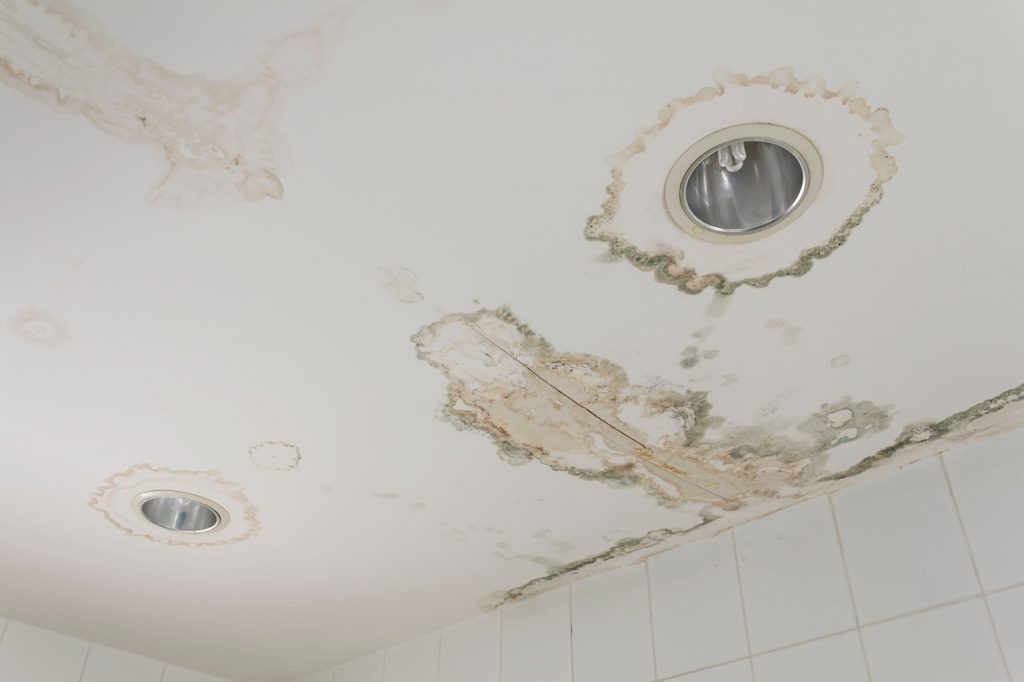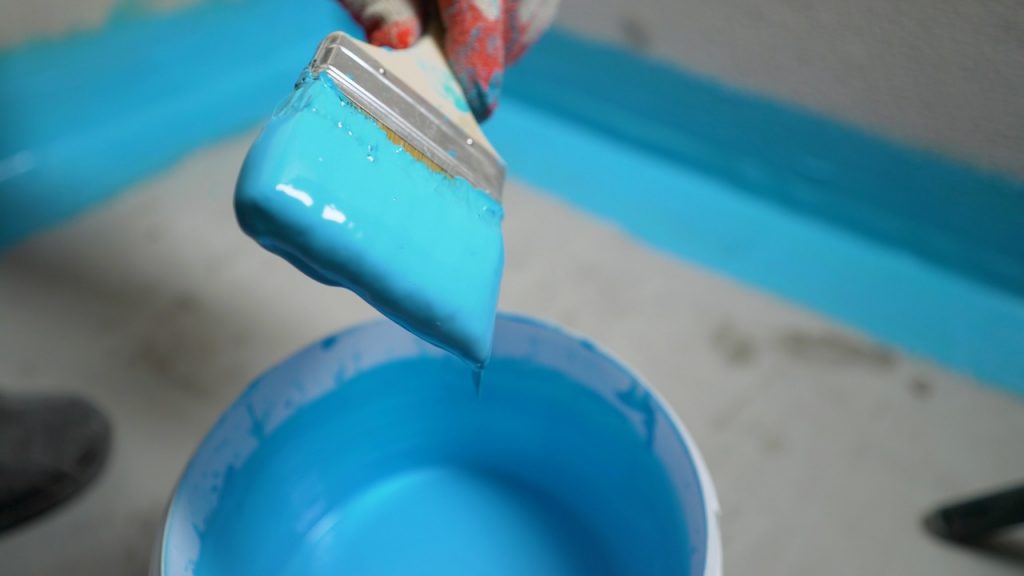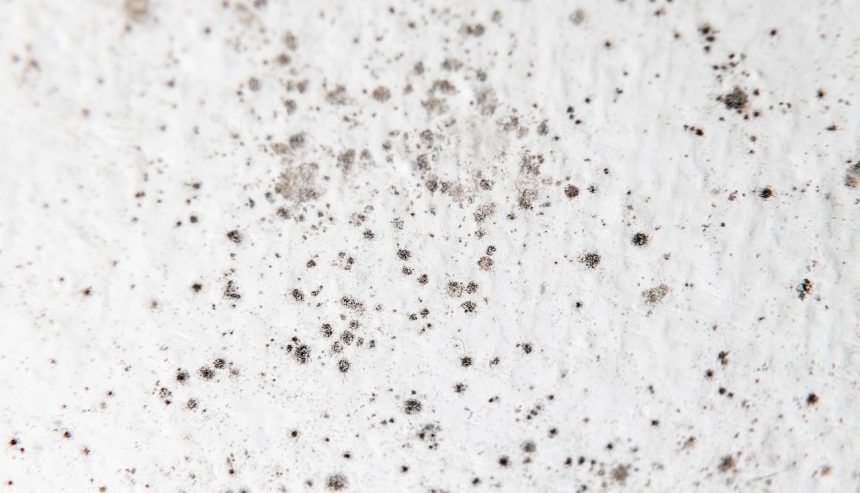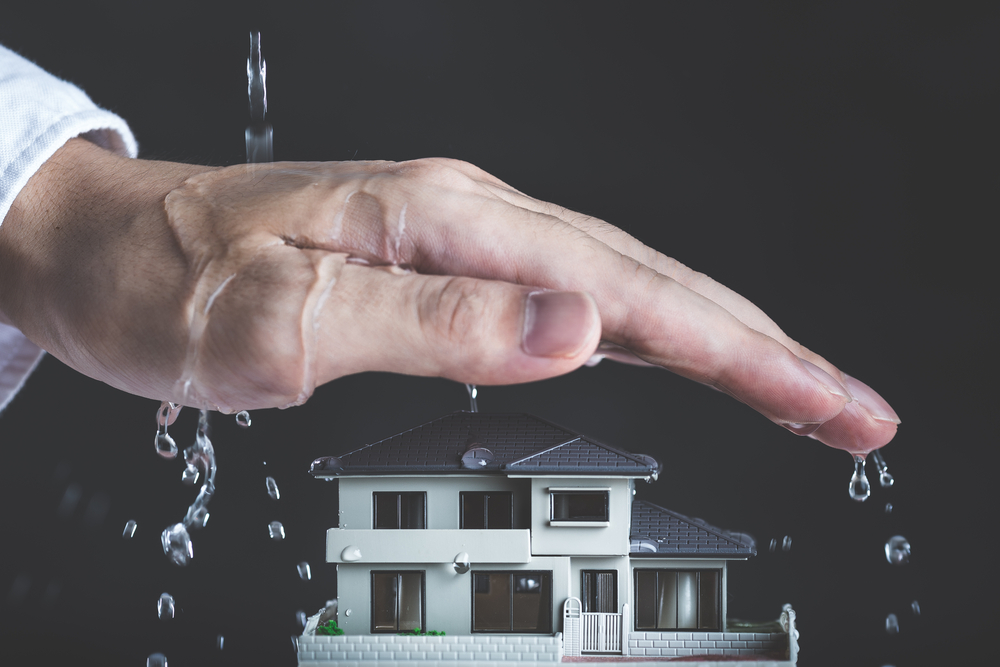Mold growth on bathroom ceilings is a common problem due to the high humidity and moisture levels. If you’re considering painting a bathroom ceiling with mold, following best practices to ensure the mold is adequately addressed before painting is essential. Failing to do so could lead to recurring mold issues and damage the integrity of your home.
At PuroClean of Southern Indiana, we specialize in mold remediation and offer expert advice for tackling mold in DIY projects. Below, we’ll discuss how to prepare your ceiling, the right products, and tips for preventing mold from returning.

Professional rehabilitation of water damage will mitigate mold growth in the future.
Painting a Bathroom Ceiling with Mold: Best Practices
Preparing Surfaces for Painting
Before you paint a bathroom ceiling with mold, thoroughly preparing the surface is critical. Covering mold with paint is a temporary solution that won’t stop it from spreading. Here’s how to properly prepare your ceiling for painting:
- Clean and Remove Mold: First, scrub away any visible mold using a mixture of water and a mold-killing cleaner like bleach or a commercial mold remover. Wearing gloves, a mask, and goggles is essential to protect yourself from mold spores during this process.
- Inspect for Damage: Check the ceiling for signs of water damage, such as peeling paint or soft spots. These areas should be repaired before you paint. Mold thrives in damp conditions, so it’s crucial to eliminate the underlying issue causing moisture.
- Dry the Surface: Once the mold has been removed and any damage repaired, ensure the surface is completely dry. Mold can quickly return in moist environments, so ensure your bathroom is well-ventilated, and use a dehumidifier if necessary.
By following these steps, you’ll create a clean, mold-free surface that’s ready for painting.

Scrubbing and scraping may be necessary in order to properly prep your surface.
Choosing the Right Mold-Resistant Products
When painting a bathroom ceiling with mold, selecting the right products is critical to preventing mold recurrence. Mold-resistant paints and primers are designed to resist mildew and mold growth in damp areas like bathrooms. Here are some products to consider:
- Mold-Resistant Primer: Applying a mold-resistant primer before painting creates an additional layer of protection. These primers seal surfaces and prevent moisture from penetrating the ceiling.
- Mold-Resistant Paint: After priming, use a mold-resistant paint. These paints are formulated with antimicrobial properties that discourage mold and mildew growth over time. Choose a paint explicitly designed for high-humidity environments, such as bathrooms.

PuroClean of Southern Indiana recommends using products labeled explicitly for mold resistance to ensure long-term protection for your bathroom ceiling.
Preventing Mold Recurrence
Addressing mold before painting is only part of the solution. You must also take steps to prevent mold from returning. Mold thrives in damp, poorly ventilated areas, making bathrooms a prime target. Here’s how to reduce the risk of future mold growth:
- Improve Ventilation: Install or repair exhaust fans to ensure proper air circulation in your bathroom. Run the fan during and after showers to reduce moisture buildup.
- Reduce Humidity: Use a dehumidifier to keep humidity levels low in your bathroom. Aim for a humidity level below 50%, less conducive to mold growth.
- Fix Leaks Promptly: Address any leaks from plumbing fixtures or the roof that may be causing excess moisture. Regularly inspect your bathroom for signs of leaks and fix them as soon as possible.
Implementing these strategies will help prevent mold from returning, ensuring your bathroom ceiling remains in good condition.
Safety Tips for DIY Mold Projects
If you’re planning to paint a bathroom ceiling with mold, safety is a top priority. Mold spores can be harmful when inhaled, so it’s essential to protect yourself during the process. Here are some safety tips to follow:
- Wear Protective Gear: Always wear gloves, goggles, and a mask to avoid contact with mold spores and harsh chemicals.
- Ensure Proper Ventilation: When using mold-killing products and paints, work in a well-ventilated area. Open windows or use fans to keep the air circulating.
- Know When to Call a Professional: If the mold problem is extensive or persists despite your efforts, it may be time to call a professional restoration company like PuroClean of Southern Indiana. Our experts can ensure that the mold is thoroughly removed, and the underlying moisture issue is addressed.
Southern Indiana’s Mold Removal Experts
Dealing with mold in your bathroom can be frustrating, but with the right approach, you can successfully clean and paint your bathroom ceiling. At PuroClean of Southern Indiana, we specialize in mold removal and water damage restoration, ensuring your property is safe and mold-free. For more information on our mold removal services, visit PuroClean of Southern Indiana or call (812) 951-1300. Don’t wait—let our experts help you protect your home and prevent mold from returning.




 PuroClean of Southern Indiana
PuroClean of Southern Indiana